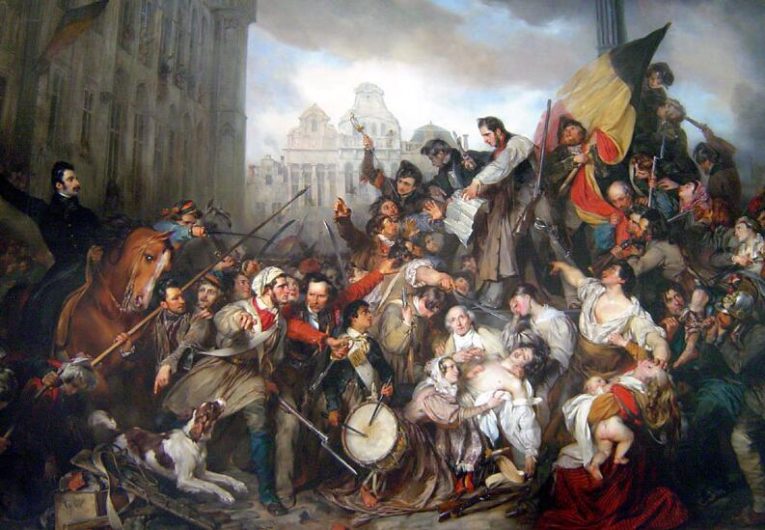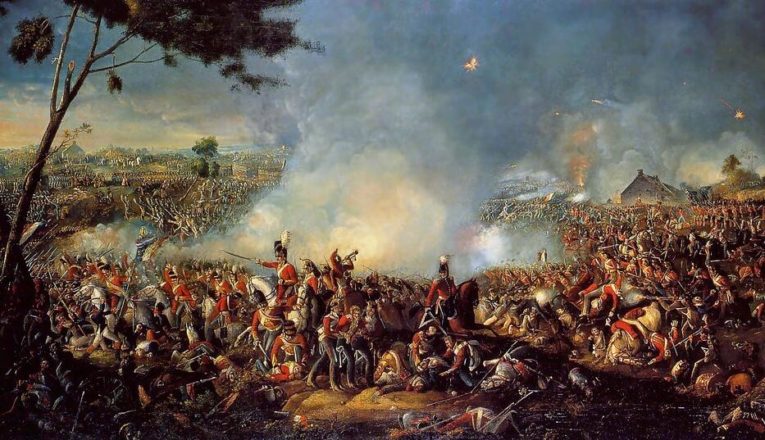Belgium’s history starts with the fact that the present Belgium was conquered by the Roman Empire in the year 57 before our era. In the Middle Ages, the area was divided into several feudal states. The western part was gradually placed under France, and the eastern one under the German-Roman Empire. Belgium was part of the Netherlands, which was assembled under one prince during the 1400s and 1500s, first under Burgundy, and then under the Habsburg house. The northern part of the Netherlands (today’s Netherlands), broke out and became independent, while the southern part, Belgium, remained under the Habsburg house and was called the Spanish Netherlands, later the Austrian Netherlands.
Belgium became an independent kingdom in 1831 with Leopold 1 as the first king. Belgium was the first country on the continent to carry out the industrial revolution. In the 1800s and 1900s, the country had several colonies in Africa; largest was Belgian Congo. Belgium was invaded by German troops during both world wars despite being neutral. After World War II, the neutrality policy was abandoned and Belgium joined NATO.
Belgium’s capital Brussels is the seat of both NATO and the EU. After 1993, Belgium is a federal state with three regions: Flanders, Wallonia and the metropolitan area of Brussels.
Ancient and Middle Ages
In the year 57 BCE. the present Belgium was conquered by Caesar. The area was then inhabited by Belgians, a Celtic tribe. Under the name Gallia Belgica, the area formed one of the four provinces of Roman Gallia. This tribe gradually became mixed with Franks, Frisians and Scissors. In the time of the migration, the area was conquered by the Franks, but the kingdom was divided by the settlement of Verdun in 843. The western part, Artois and Flanders, fell to France, the eastern part gradually became part of the German-Roman empire.. In the long term, Belgium was dissolved into a multitude of counties, duchies and first-dioceses. Eventually, Artois and Flanders came to Burgundy, and the Burgundian dukes succeeded in acquiring all Dutch provinces by purchase, inheritance and marriage.
Leo Belgicus, the Belgian lion. 17th century map of the Netherlands and Belgium shaped like a lion.
At that time, the Netherlands was famous for its wealth, which was mainly due to trade and the advanced industry (textiles and weapons). Antwerp became Europe’s richest trading city. The cities often revolted against the Burgundian dukes, who had to grant a certain autonomy to the municipalities, where the bourgeoisie had great influence.
Belgium under foreign rule
In 1482, Belgium came under the house of Habsburg. Karl 5 (1506–1555) was a popular prince born and raised in Ghent. But his son Philip 2 (of Spain) led a ruthless suppression policy through his governor, the Duke of Alba. This provoked the Dutch War of Independence in 1572, which ended with the complete liberation of the northern provinces from Philip by the peace in Utrecht in 1579. On the other hand, the governor Alessandro Farnese succeeded in preserving the southern provinces, now Belgium. During these and subsequent struggles, the country’s rich economic life was destroyed for centuries.
During the French king Louis 14’s war against Austria and the Free Dutch Republic, Belgium suffered much as a war scene, and weak Spain also had to relinquish Belgian territories to France several times. At the peace in Utrecht in 1713 after the Spanish succession war, Belgium (the South of the Netherlands) fell to the German Emperor Karl 6 as an inheritance under the name of the Austrian Netherlands.
During the Austrian succession war (1740–1748), Belgium suffered a lot from French invasion, but then experienced a number of years of significant progress both materially and culturally. The victory of revolutionary France at Jemappes in 1792 led to the French occupation of Belgium. At the peace talks at Campo Formio in 1797 and Luneville in 1801, Belgium was incorporated into France.
After Napoleon’s fall, the powers of the Vienna Congress in 1814-1815 agreed to unite the Netherlands under one king who was to be Grand Duke of Luxembourg at the same time. Prince William 6 of Orange, who in 1813 had been proclaimed King William 1 of the Netherlands, had in 1815 prepared a common constitution for the entire Netherlands. On the one hand, the following 15-year period meant progress in many areas; the business world flourished again, the northern Dutch market was once again open to southern Dutch industry, and Antwerp again became an important port city. The education system, which had been in decline for 200 years, was rebuilt. Three universities were founded in Leuven(where the French had closed down the old university in 1797), in Ghent and in Liège.
The Battle of Waterloo in Belgium in 1815 became the last battle of the Napoleonic Wars.
For the Flemish majority of the population, the reunification was of particular importance. At King Vilhelm’s educational reforms, the Flemish were again taught in their own language. On the other hand, the leaders in Belgium were French speakers, who did not find themselves in a predominantly Dutch-speaking state. An even greater obstacle to a true unity formed the Catholic Church by its distrust of the Dutch Calvinists. In addition, the king in his marked self-sufficiency was little suited to leveling the contradictions, and in 1830, as a result of the French July revolution, it therefore revolted in Brussels, starting from the French-speaking circles.
It all ended with the second division of the Netherlands and the establishment of the Kingdom of Belgium under Leopold 1 by election in the National Assembly on July 4, 1831. In the London Treaty of 1839, which established peace between the Netherlands and Belgium, the Netherlands and all European states recognized Belgium’s independence and duty of neutrality.


